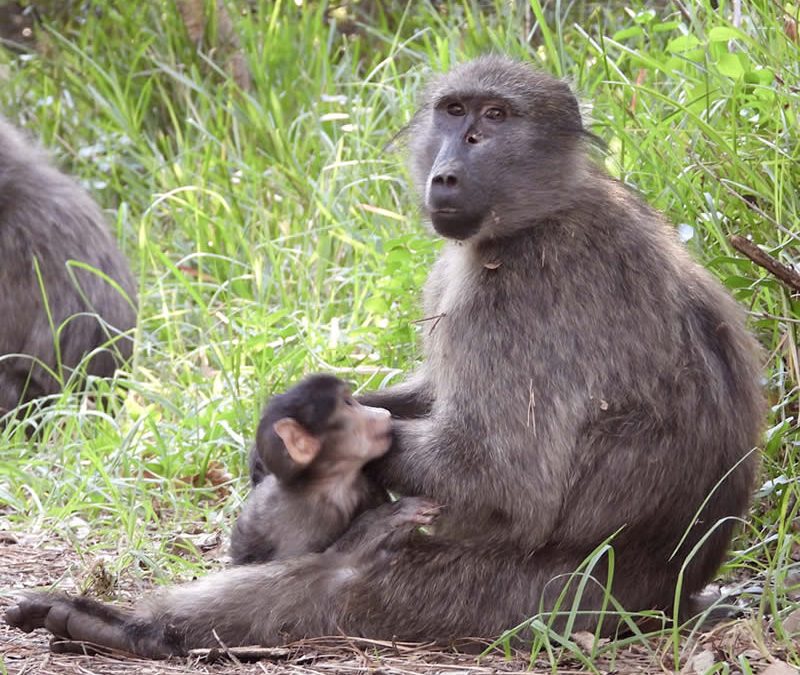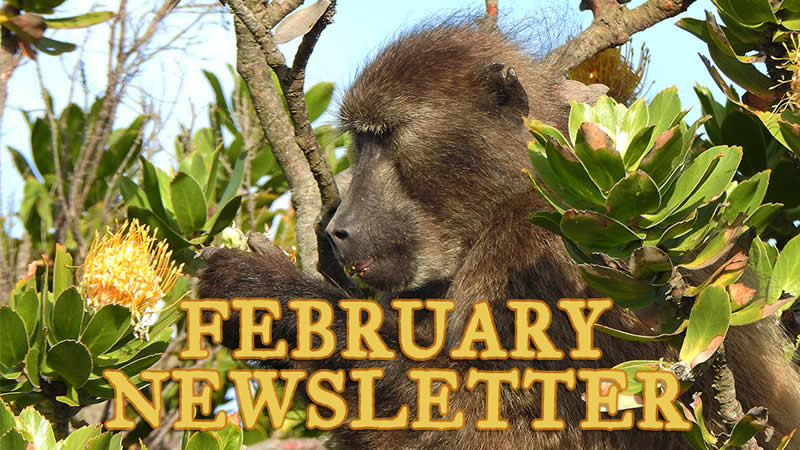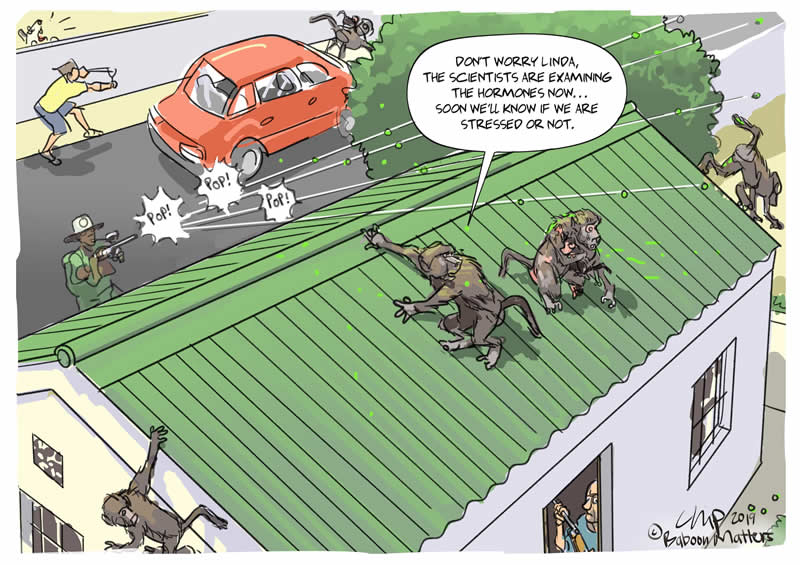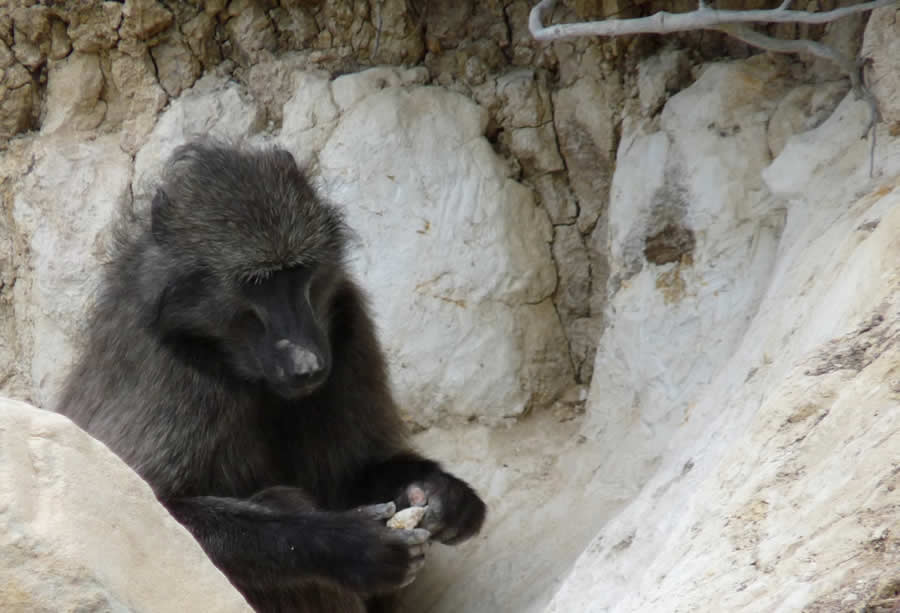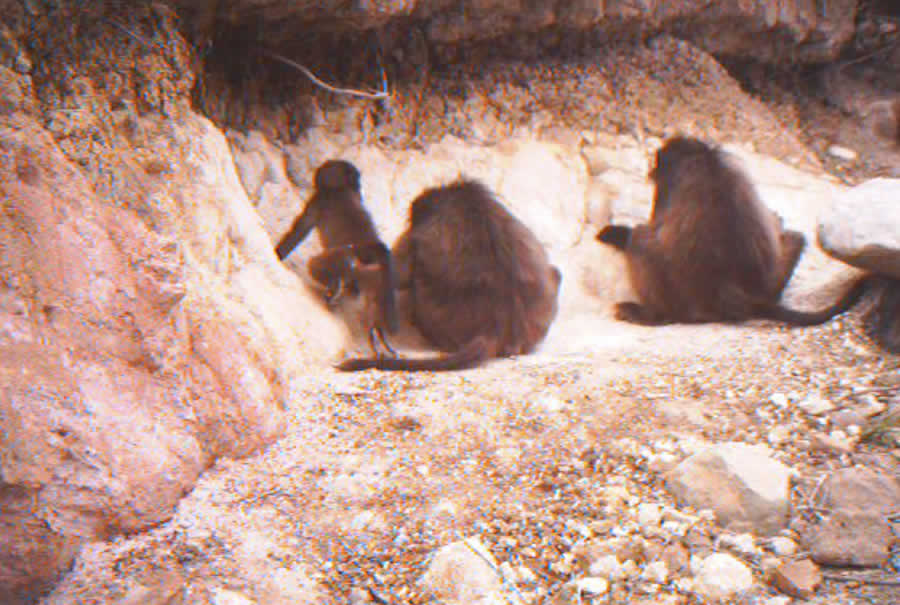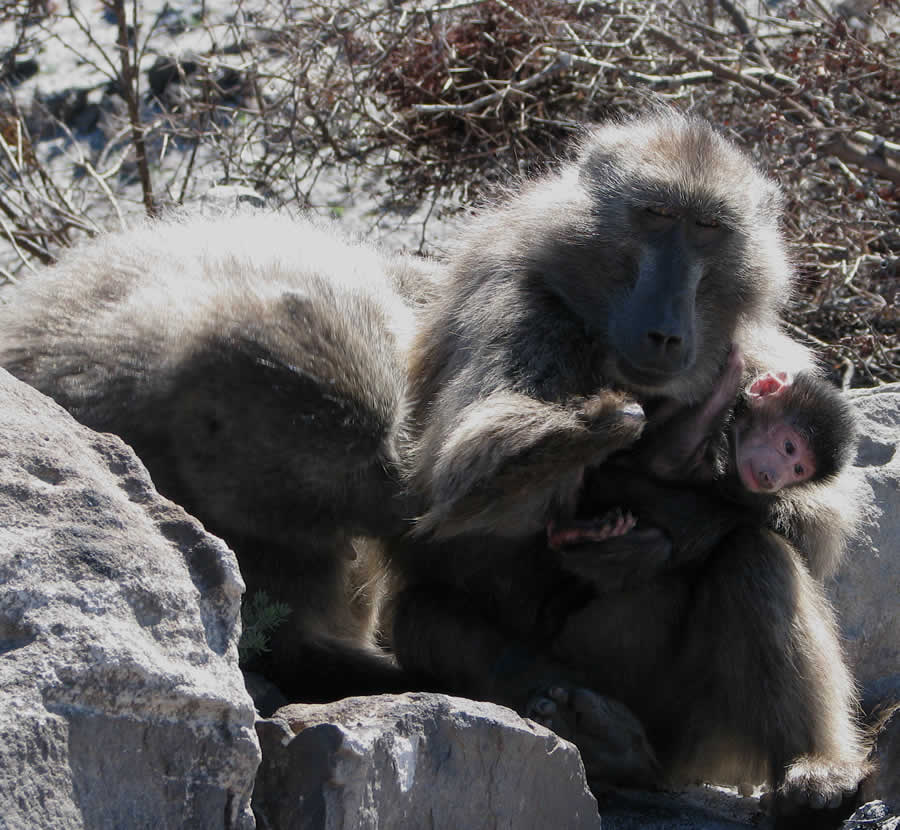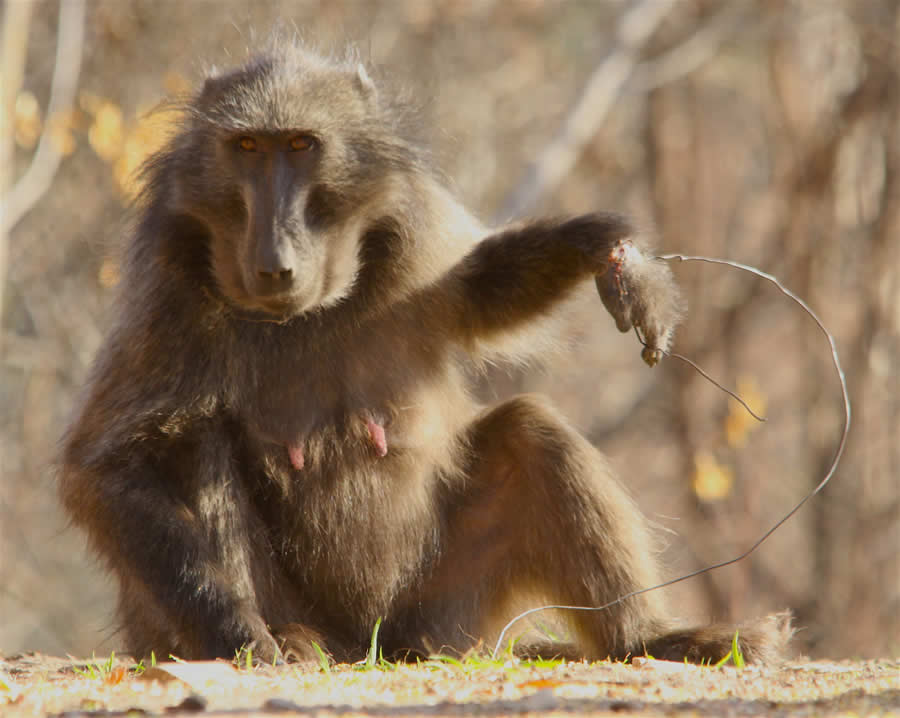The word frustrating comes up again as this scenario is a shocking illustration of how poor management decisions have disastrous long term consequences.
In 1998 Dr Gaynor advocated for an electric fence along the boundary between Scarborough and the Cape of Good Hope Nature Reserve.This pre-emptive measure would probably have prevented the Groot Olifantsbos baboon troop habituating to the rich rewards of village life.
The fence was not installed and when service providers HWS actively pushed for the electric fence to be installed in 2014 – 2015 the idea was, again, not taken up. From reports, it seems that residents did not want the electric fence and the complication of multiple land-owners meant that there had
to be an agreement in place regarding installation, maintenance and importantly – who pays for what?
Whilst the electrification of the fence line was not an option, the landscape of fear and lethal management methods were in place and in the period 2013 – 2018, 7 of the Misty Cliffs troop of 18 baboons had been killed under the management guideline. Other mortalities were as a result of
shootings (2 baboons killed) and electrocution (1) and poison (1). Unusually, 2 of the well-known male baboons simply disappeared never to be seen again and so the troop of 18 was reduced to just 6
At the start of 2019 the 3 remaining adult females each had a juvenile, but by June 2019 2 of the juveniles had been killed and there was talk of the small group of 4 baboons being “euthanised” in terms of the management guidelines. Save Scarborough Baboons managed to secure a moratorium on killing the girls until 30 September 2019.
In the months that followed there has been a huge amount of effort from residents, from the baboon groups and from the concerned public to find out what is actually happening and what could be a viable outcome for the small group. At the time of writing, BTT had not provided a proposal, plan, public meeting or any proactive suggestion to resolve the concerns.
The community have been effectively disenfranchised through this lack of public participation yet are expected to help find, and fund, a solution to a problem that is widely accepted to be the result of “management failing these baboons”.
Baboon Matters has written numerous emails requesting information but, along with other deeply concerned groups, we have no information. The most obvious solution would be the electric fence, but for reasons unknown it seems the fence will not be installed any time soon. One group is reportedly petitioning the national minister for help, and Scarborough residents task groups are trying to ascertain if funding for the electric fence could be forthcoming from the resident rate base.
We believe that Cape Nature has indicated willingness to provide permits for the four to be relocated to a sanctuary – but not in the Western Cape. There has been some talk of a private safari park taking the girls, but we have not seen any plan or confirmation of this option either.
So there are some ideas, but, at the time of writing this newsletter, nothing more. None of the baboon rehabilitation facilities (all situated in the northern provinces) have immediately available enclosures suitable to four free roaming baboons and so the relocation option would have to include the costs of building an enclosure, a task I believe the BTT must be held responsible for; it was after all poor management decisions that led to this situation, yet indications are that the NGO sector are expected to fundraise for the bulk of relocation costs (being the building of the enclosure and provision of food and vet care for the rest of the girls’ lives). If the NGO sector and general public are to raise the necessary funds, then surely the BTT must make this known officially, with a time line, with some sort of plan that we agree to?
There has been much in the social media about the four females returning to their “family” and remaining “wild and free” in the CGHNR. But which troop is the “family” troop? There has been recorded splitting within the GOB from as early as 2008, and by 2013 the Misty Cliffs troop was being recorded as a separate troop. If the natal troop of the 4 survivors is the Misty Cliffs troop, well they have all been killed; if the natal troop is GOB (and the girls do return to the GOB troop from time to time) then we can assume that the 3 adult females are probably lower ranking as it would be unusual for a high ranking female to leave her natal troop. Within either of these scenarios there is not much to suggest that the 4 individuals have strong bonds that would encourage them to stay with GOB and it is more likely that a young dispersing male would join them in Scarborough if the chance arose.
It must also be acknowledged that in the past 3 years the girls have become “residents” of the villages of Scarborough and Misty Cliffs; their offspring have been born in the villages and know no other life. For me it is dreadfully sad that this group has no semblance of normal baboon life – they do not spend time together unless at the sleep sites, they do not spend hours relaxing and grooming which is an important part of baboon social behaviour and activity. They do not get to forage on the intertidal zone, nor does the surviving juvenile Skye have troopmates to interact and play with and there is no male to safe guard the troop or to mate with. This unusual existence has lasted for nearly 3 years – why would anyone want this for baboon? For baboons, social structure, interaction – even the daily soap-opera squabbles – are all vitally
important. If you love baboons you would want them to have that life, not a life hiding out in a village, walking alone, being chased by paintball guns, herded to an area where you choose not to be.















